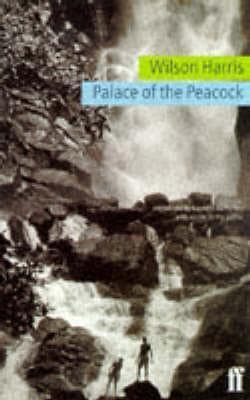
Book Review Summary: The Palace of the Peacock
Introduction
"The Palace of the Peacock" is a novel by Wilson Harris, first published in 1960. It tells the story of a doomed crew navigating their way up-river through the jungles of Guyana. This novella explores themes of history, landscape, and humanity, showcasing Harris's poetic vision and cross-culturalism. With its unique style and challenging narrative, "The Palace of the Peacock" has garnered both praise and criticism from readers. In this article, we will analyze the views of readers, summarize the reasons for recommendation and not recommendation, and provide a conclusion on this intriguing book.
About Wilson Harris
Wilson Harris, born in Guyana in 1921 and based in England since 1959, is one of the most original novelists and critics of the twentieth century. His writings, including poems, essays, and twenty-four novels, reflect his passionate defense of cross-culturalism and his visionary exploration of the interdependence between history, landscape, and humanity. Harris's works have been celebrated for their unique style and his ability to create a sense of place and time. In 2010, he was knighted by Queen Elizabeth II for his services to literature.
Analysis of Views
- A mindfuck novella: Readers describe "The Palace of the Peacock" as a challenging, unconventional read. The novel's time and reality are manipulated skillfully, creating a sense of disorientation and uncertainty. Some readers found it difficult to follow the storyline or distinguish between allegorical descriptions and actual events.
- Psychedelic and dreamlike: The prose of Wilson Harris has been compared to the psychedelic experience. Readers praise the book for its mind-expanding quality and its ability to transport them into a surreal world. The novel's imagery and language create a sense of wonder and awe.
- Geographic journeys into interior spaces: "The Palace of the Peacock" explores both geographic journeys and spiritual and psychological ones. Readers appreciate the way Harris takes them on a journey that transcends physical space to delve into the depths of human experience. The novel raises questions about reality, verisimilitude, life, and death, making it a thought-provoking read.
- Brilliant prose and intriguing signifying play: Wilson Harris's writing style is praised for its beauty and intricate signifying play. Readers enjoy the way he uses names freely, referring to different people and things without fully naming them. This creates a sense of mystery and adds depth to the characters and their experiences.
- Challenging but rewarding: While some readers found "The Palace of the Peacock" challenging due to its unconventional style and lack of clear narrative structure, others found it rewarding for its richness in images and its definitive take on colonialism. Readers who appreciate lyrical, nonlinear work will particularly appreciate this book.
Reasons for Recommendation
- Unique writing style: Readers recommend "The Palace of the Peacock" for its unique writing style, which they describe as poetic, dreamlike, psychedelic, and mind-expanding. The prose is praised for its beauty and intricate signifying play, adding depth to the characters and their experiences.
- Thought-provoking exploration: The novel raises questions about reality, verisimilitude, life, and death, making it a thought-provoking read for those interested in post-colonial literature and avant-garde works. The exploration of geographic journeys into interior spaces adds depth to the narrative and provides a deeper understanding of humanity's relationship with history, landscape, and culture.
- Richness in images: The book's richness in images is highly recommended by readers. The vivid descriptions create a sense of atmosphere and transport readers to a world where reality blurs and dreams become tangible. The imagery adds depth to the characters' experiences and enhances the overall reading experience.
Reasons for Not Recommendation
- Lack of clarity: Some readers find "The Palace of the Peacock" challenging due to its lack of clarity in terms of plot structure, character motivations, and allegorical descriptions. They struggle to distinguish between actual events and symbolic representations, making it difficult to follow the storyline or understand the significance of certain elements within the narrative.
- Style over substance: A few readers criticize the book for placing more emphasis on style over substance. They find the prose beautiful but feel that it detracts from the story's coherence. They argue that the book could have been more concise or focused on delivering a clear narrative without sacrificing its poetic qualities.
Conclusion
"The Palace of the Peacock" by Wilson Harris is a novel that evokes a range of emotions among readers. While some find it challenging due to its unconventional style and lack of clarity, others appreciate its unique writing style, thought-provoking exploration, richness in images, and poetic vision. The novel's ability to transport readers into a surreal world filled with mystery and wonder makes it a captivating read for those who enjoy experimental literature with an avant-garde twist. While "The Palace of the Peacock" may not be suitable for everyone due to its challenging nature and lack of clear narrative structure, it remains a highly recommended read for those seeking a mind-expanding experience that transcends traditional storytelling conventions.